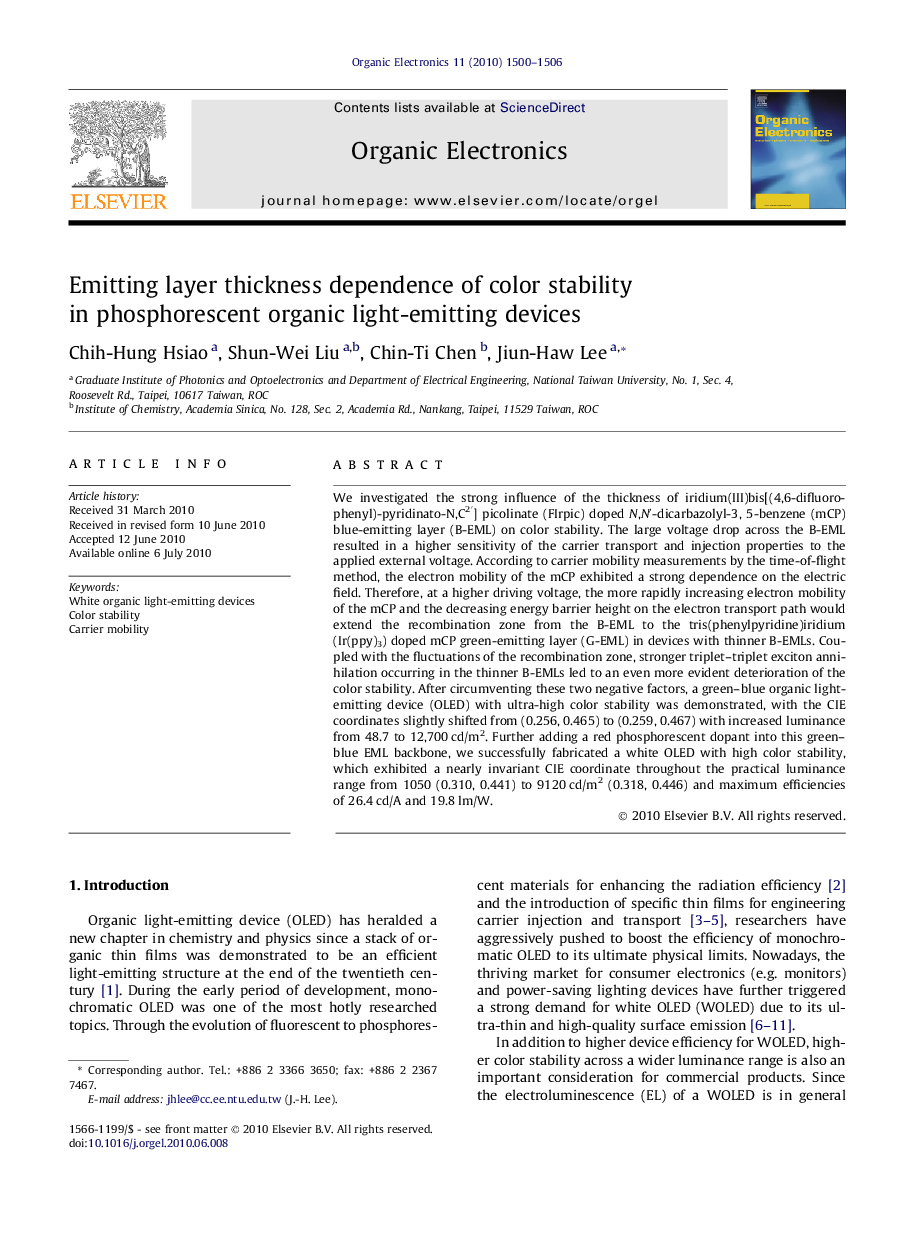| کد مقاله | کد نشریه | سال انتشار | مقاله انگلیسی | نسخه تمام متن |
|---|---|---|---|---|
| 1265514 | 972226 | 2010 | 7 صفحه PDF | دانلود رایگان |

We investigated the strong influence of the thickness of iridium(III)bis[(4,6-difluorophenyl)-pyridinato-N,C2′] picolinate (FIrpic) doped N,N′-dicarbazolyl-3, 5-benzene (mCP) blue-emitting layer (B-EML) on color stability. The large voltage drop across the B-EML resulted in a higher sensitivity of the carrier transport and injection properties to the applied external voltage. According to carrier mobility measurements by the time-of-flight method, the electron mobility of the mCP exhibited a strong dependence on the electric field. Therefore, at a higher driving voltage, the more rapidly increasing electron mobility of the mCP and the decreasing energy barrier height on the electron transport path would extend the recombination zone from the B-EML to the tris(phenylpyridine)iridium (Ir(ppy)3) doped mCP green-emitting layer (G-EML) in devices with thinner B-EMLs. Coupled with the fluctuations of the recombination zone, stronger triplet–triplet exciton annihilation occurring in the thinner B-EMLs led to an even more evident deterioration of the color stability. After circumventing these two negative factors, a green–blue organic light-emitting device (OLED) with ultra-high color stability was demonstrated, with the CIE coordinates slightly shifted from (0.256, 0.465) to (0.259, 0.467) with increased luminance from 48.7 to 12,700 cd/m2. Further adding a red phosphorescent dopant into this green–blue EML backbone, we successfully fabricated a white OLED with high color stability, which exhibited a nearly invariant CIE coordinate throughout the practical luminance range from 1050 (0.310, 0.441) to 9120 cd/m2 (0.318, 0.446) and maximum efficiencies of 26.4 cd/A and 19.8 lm/W.
Journal: Organic Electronics - Volume 11, Issue 9, September 2010, Pages 1500–1506